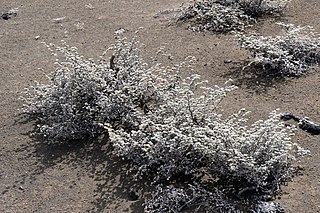Hirasea acutissima is a species of small air-breathing land snail, a terrestrial pulmonate gastropod mollusk in the family Charopidae. The width of the shell is 2 mm. The height of the shell is 4 mm. H. acutissima is endemic to Haha-jima in the Ogasawara Islands, Japan, and is listed as endangered in the IUCN Red List of Threatened Species. In 2007, the species was rediscovered after being considered to be extinct.

Hirasea is a genus of small, pulmonate land snails in the family Charopidae. This genus sees its highest diversity in the Hawaiian Islands, but species are distributed throughout Japan and Polynesia.

Hirasea biconcava is a species of small air-breathing land snail, a terrestrial pulmonate gastropod mollusk in the family Endodontidae.
Hirasea chichijimana is a species of small air-breathing land snail, a terrestrial pulmonate gastropod mollusk in the family Endodontidae.
Hirasea diplomphalus is a species of small air-breathing land snail, a terrestrial pulmonate gastropod mollusk in the family Endodontidae.
Hirasea eutheca is a species of small air-breathing land snail, a terrestrial pulmonate gastropod mollusk in the family Endodontidae.
Hirasea goniobasis is a species of small air-breathing land snail, a terrestrial pulmonate gastropod mollusk in the family Endodontidae.
Hirasea hypolia is a species of small air-breathing land snail, a terrestrial pulmonate gastropod mollusk in the family Endodontidae.
Hirasea insignis is a species of small air-breathing land snail, a terrestrial pulmonate gastropod mollusk in the family Endodontidae.
Hirasea major is a species of small air-breathing land snail, a terrestrial pulmonate gastropod mollusk in the family Endodontidae.
Fametesta mirabilis is a species of air-breathing land snail, a small terrestrial pulmonate gastropod mollusc in the family Charopidae.
Fametesta operculina is a species of air-breathing land snail, a small terrestrial pulmonate gastropod mollusc in the family Endodontidae.
Hirasea planulata is a species of small air-breathing land snail, a terrestrial pulmonate gastropod mollusk in the family Endodontidae.
Hirasea profundispira is a species of small air-breathing land snail, a terrestrial pulmonate gastropod mollusk in the family Endodontidae.

Hirasea sinuosa is a species of small air-breathing land snail, a terrestrial pulmonate gastropod mollusk in the family Endodontidae.

The green iora is a species of bird in the family Aegithinidae. It is found in the Thai-Malay Peninsula, Sumatra and Borneo. Its habitats include lowland forests, secondary forest and mangrove forest. It is threatened by habitat loss, and the International Union for Conservation of Nature (IUCN) has assessed it as near-threatened.

Tiquilia nesiotica, known as gray matplant, is a species of plant in the family Boraginaceae. It is endemic to the Galápagos Islands.
Artemisia nesiotica is a rare California species of sagebrush in the daisy family, known by the common name island sagebrush. It is endemic to the Channel Islands of California, found on 3 of the 8 islands.

The JapaneseRed List is the Japanese domestic counterpart to the IUCN Red List of Threatened Species. The national Red List is compiled and maintained by the Ministry of the Environment, alongside a separate Red List for marine organisms. Similarly drawing on the relevant scientific authorities, NGOs, and local governments, the Ministry of the Environment also prepares and publishes a Red Data Book that provides further information on species and habitats.





